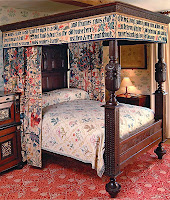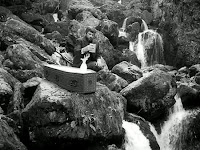Greetings, meetings and music
As you can see, I'm getting ready for the Festive Season. It's great, isn't it, that lots of different religions have festivities at this time? Solstice, turning of the year, end of fasting, return of the light, etc. There's more in January, too.
Alice gave me my very own tree to decorate, but I'm not sure about where to put that lovely bauble... Forgive me for reminding you, but you can click on any photo to see them all a larger size, or open individually in a new tab for glorious full size.
We've posted these greetings now, but you'll see we haven't quite finished the topics below. Come back later, please. Meanwhile, enjoy some festive goodies, like mulled wine; cherry liqueur chocs (Alice's favourites); ham and eggs; haggis, neaps and tatties; or whatever tickles your fancy. [ Tickles? There you go again - humans!]
Meetings with Masters 1: Yoda
Yoda, of course, is a Master of The Force, who taught many warriors in his 900 years of life. I was privileged to meet with this avatar of him. (And no, I don't mean as in the film Avatar!) I especially liked the way he says, Judge me by my size do you? Size matters not. Gave me a whole new outlook. He was about to go and live with an enthusiastic little boy (Toby, to you) but paid us a visit first, and gave me some training.
 It's really tiring keeping
the Force going for long enough to make one's
light-sabre stay bright. Yoda did give me constant
encouragement. Do, or do not, he said. There is no try. But I'm afraid I'll never make it to full Jedi Knight standard, however hard I practise. Sigh.
It's really tiring keeping
the Force going for long enough to make one's
light-sabre stay bright. Yoda did give me constant
encouragement. Do, or do not, he said. There is no try. But I'm afraid I'll never make it to full Jedi Knight standard, however hard I practise. Sigh.Well, as Tyrion says, My brother has his sword, and I have my mind. And a mind needs books like a sword needs a whetstone. That's why I read so much. No wonder he's our favourite character in Game of Thrones. Peter Dinklage is a terrifically good actor - and so sexy too. OK, OK, digression over.
 So, I must get Alice to let us watch those Star Wars DVDs again. I mean the ones called Episode IV, V and VI. We purists aren't into the "subsequent prequels" I, II and III. Get your head round that illogicality, if you can! Oooh, that opening "crawl". Love it.
So, I must get Alice to let us watch those Star Wars DVDs again. I mean the ones called Episode IV, V and VI. We purists aren't into the "subsequent prequels" I, II and III. Get your head round that illogicality, if you can! Oooh, that opening "crawl". Love it.Did you know there's actually a Jedi religion? People even enter it on census forms. They say it's just as much a faith as Scientology. Which leads us to -
Meetings with Masters 2: The Master (the film)
 Oh dear! I'm afraid Alice seems to be coming down with a nasty cough and cold (we do hope it isn't the ghastly 'flue, since she had her jag in good time this year) and doesn't really feel up to completing this entry on Meeting with Masters and Music. If only I could type it myself... It's all here in my head!
Oh dear! I'm afraid Alice seems to be coming down with a nasty cough and cold (we do hope it isn't the ghastly 'flue, since she had her jag in good time this year) and doesn't really feel up to completing this entry on Meeting with Masters and Music. If only I could type it myself... It's all here in my head! So please excuse us for now, and look again after Christmas.
Enjoy yourselves if you can - whatever you end up doing.






.jpg)

.jpg)
L.jpg)




.jpg)


















.jpg)
















.jpg)


